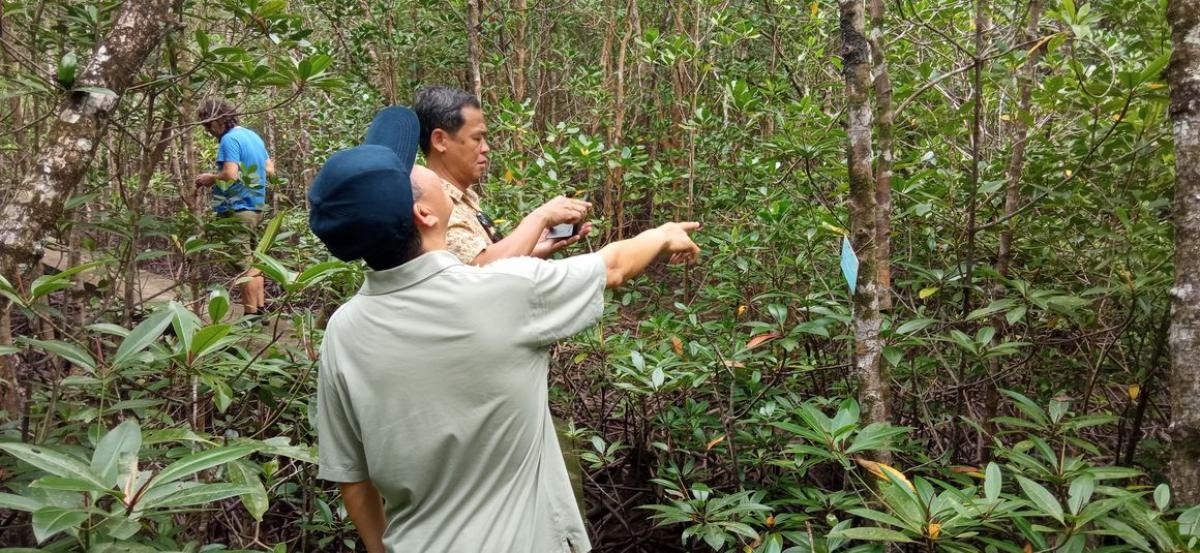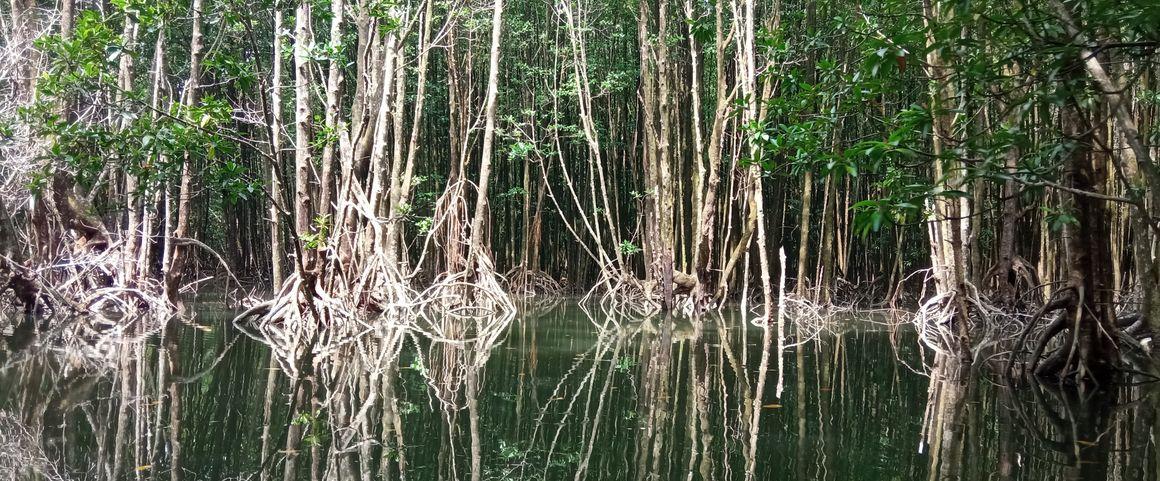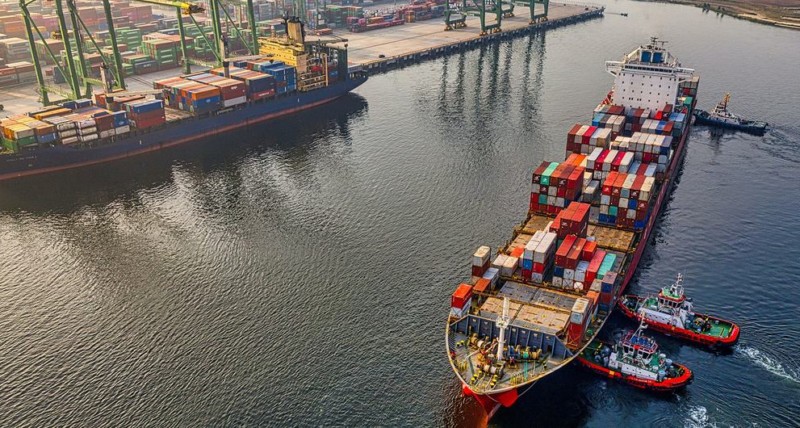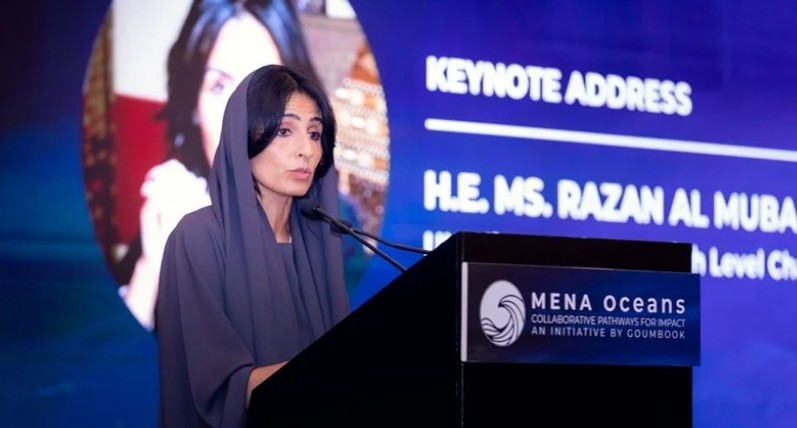Thanks to their exceptional capacity for carbon storage, mangroves are among the world’s most valuable natural allies in the fight against climate change. As the One Ocean Science Congress takes place from June 3 to 6, ahead of the United Nations Ocean Conference, a new study by Cirad, Srinakharinwirot University (Thailand), and the Joint Graduate School of Energy and Environment (JGSEE) emphasizes the need for effective mangrove restoration strategies that incorporate species diversity and the needs of local communities.
In a recent study (1), researchers analyzed 32 years of satellite data and field measurements from 24 study plots, examining mangrove species diversity and structure along a coastal-to-inland gradient. The results showed that natural mangroves have significantly higher aboveground biomass compared to restored or spontaneously regenerated mangroves.
“This is mainly due to restoration practices that often rely on mono-specific plantations — that is, composed of only one species,” explain Valéry Gond and Camille Piponiot, scientists at Cirad and co-authors of the study.
For example, aboveground biomass in natural mangroves can reach up to 536 tons of carbon per hectare, while in restored plantations, it only reaches 99 tons per hectare — a fivefold difference.
Toward More Diverse and Locally Adapted Approaches
These findings underscore the complexity of mangrove restoration. For restoration efforts to be effective, it is essential to consider species diversity, site conditions, planting density, and planting methods.

“A more diverse and adapted approach is necessary to maximize the impact of restoration projects,”
says Asamaporn Sitthi, lead author of the study and researcher at Srinakharinwirot University (Thailand).
This approach is now being embraced by several regional initiatives, including the RESCuE Project (Monitoring and REstoration for Sustainable Coastal Ecosystems).
Now in its second phase, RESCuE aims to develop mangrove restoration strategies in partnership with local stakeholders and communities, operating in Thailand, Cambodia, and Malaysia, and soon expanding to Vietnam’s Mekong Delta.
Vietnam: Easing Pressure on Mangroves Through Smarter Aquaculture
These findings also offer new prospects for Vietnam, which has extensive mangrove areas and has successfully restored part of the mangroves lost in recent decades. These mangroves are spread in narrow strips along the coastline or estuarine rivers. Much of this mangrove cover lies outside protected areas and is used for integrated aquaculture to support local livelihoods.
According to current exploitation guidelines, 60% of the total land area must remain covered with mangroves, with harvesting allowed every 15 years. This system enables carbon storage, carbon credit trading, and environmental co-benefits.
However, due to low yields of fish, shrimp, and crab in the remaining 40% used for aquaculture, there is increasing encroachment into mangrove areas. If the income and resilience of aquaculture zones can be improved, pressure on mangroves and their associated biodiversity could be greatly reduced.
“Diversified aquaculture, balanced nutrient input, and multi-integration systems can significantly increase revenues and the resilience of production systems — while reducing or preventing encroachment,”
explains Kazi Ahmed Kabir, researcher at Cirad and specialist in sustainable aquaculture systems and coastal ecosystem restoration.
Among these systems are:
- Agroforestry, combining mangroves with horticultural crops
- Integrated Multi-Trophic Aquaculture (IMTA), combining the farming of shrimp, crabs, fish, and seaweed.
Source: Cirad




